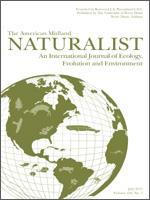This study investigated effects of a prescribed burn on the small mammal community and vegetative cover in a tallgrass prairie remnant in east central Texas. Small mammals were live-trapped 8 mo before and 8 mo after a prescribed burn. Vegetation sampling confirmed drastic reduction of cover after fire in the grassland sections of the prairie. Relative abundances (captures/100 trapnights) of pygmy mice (Baiomys taylori) and cotton rats (Sigmodon hispidus) significantly decreased after the fire, whereas deer mice (Peromyscus maniculatus) significantly increased following fire. Cotton rat and pygmy mouse abundances were positively correlated with grassy litter and negatively correlated with bare ground, whereas deer mouse abundance was positively correlated with bare ground. Relative abundances of B. taylori, S. hispidus and P. maniculatus in burned sections returned to preburn levels in 8 mo. Hispid pocket mice (Chaetodipus hispidus) were not captured until after the prescribed burn. This is the first report of fire effects on this assemblage of Neotropical and Nearctic rodent species in the tallgrass blackland prairie ecosystem.
How to translate text using browser tools
1 July 2011
Responses of Small Mammals and Vegetation to a Prescribed Burn in a Tallgrass Blackland Prairie
Brianna N. Kirchner,
Nicholas S. Green,
David A. Sergeant,
Jeffrey N. Mink,
Kenneth T. Wilkins
ACCESS THE FULL ARTICLE
It is not available for individual sale.
This article is only available to subscribers.
It is not available for individual sale.
It is not available for individual sale.

The American Midland Naturalist
Vol. 166 • No. 1
July 2011
Vol. 166 • No. 1
July 2011




